
Villa San Michele, the Bedroom
I already talk about Marchesa Luisa Casati plenty and passionately and now I can confess that my attraction for Capri started when I knew that she lived there for some years during the 20’s. I came to know that the Villa where she lived was still existing and used today as a museum. Its name is Villa San Michele, a place I was so longing to see and that I visited trying to capture every single feeling I could. Here is its story.
Axel Munthe, wandering soul
Although I came to know Villa San Michele through Marchesa Casati’s story, I can’t ignore the story of its owner, doctor Axel Munthe (1857-1949). He was a swedish psychiatrist who, after attending medical school and opening his first practice in France, fell in love with Italy. The reason that Munthe finished his studies in record time was a visit to Capri that changed his life forever. After a visit to the island he fell in love with it. He discovered on a cliff a crumbled chapel called San Michele and decided to find the money to make the chapel and the surrounding property his. This is how the story of Villa San Michele started.
Between 20 years the Villa was completed and Munthe considered it as his second home. Under the little chapel he finds remnants of the villa of the Roman emperor Tiberius. The ground was filled with these treasures, which will form the nucleus of the collection of antique art that graces San Michele today. In return he treats the islanders for free. He saw his profession as a sacred calling, and absolutely refused to ask for payment for his services. His efforts and his charity bring him closer and closer to the people of Capri, who highly value his presence on the island.
He became famous as a doctor and his new circle of acquaintances arrived to include members of the Swedish royal family, including Prince Eugen, who was studying painting in Paris. Munthe became the prince’s doctor and they remained good friends. During his roman period, he soon made contact with the foreign colony in Rome, including the British diplomatic corps, and with the most prominent Roman families, he was also introduced to the Italian royal family.
By this time he was regarded as a true cosmopolitan, and his circle of acquaintances stretched across all borders in Europe, both socially and geographically. His acquaintance with Prince Eugen leads to the confidence of the Swedish royal family, and he begins to treat Crown Princess Victoria, whose health is unstable. This responsibility would transform the rest of his life. The acquaintanceship between Munthe and Crown Princess Victoria grows over the years into an intimate friendship. They share common interests, including photography and travel.
As the permanent personal physician to Queen Victoria during his later life Axel Munthe spends more of his time in Sweden, and at the Stockholm palace, but his life on Capri became a painful memory.
The Story of San Michele
The Villa became famous because its story is recorded by Dr. Munthe in his book entitled “The Story of San Michele”. Published in 1929, he began writing in 1884, when as a doctor he found himself in Naples during a severe cholera epidemic. This book is together the story of the Villa and his biography.
Munthe mixes dream and reality in an unusual manner, he displays an obvious fascination with death and a love of life at the same time, and he gives a voice during his travels to doctors and streetcleaners, people from the far north of Sweden and Parisians, saints and Father Christmases and dogs.
Reading his book one must see he had a dark side which grew stronger with the years. He was obsessed by death and surrounded himself with death and vanitas symbols. His view of life was at times pessimistic and misanthropic and he had periods of depression. I think that Villa San Michele was a kind of shelter from the world that he built for being alone, a place where he could stay in harmony with nature, sea.
The italian journalist Indro Montanelli said, after an interview with him, that Axel Munthe used to have always a ticket for Capri in his pocket because, as he said, “even die is different, in Capri”.
info source: villasanmichele.eu
book sources: “Infinite Variety. The Life and Legend of the Marchesa Casati” by Scot D. Ryersson and Michael Orlando Yaccarino; “The Story of San Michele” by Axel Munthe. The article by Indro Montanelli was issued in “La settimana INCOM” on the 19th february 1949. You can still read it if you visit the Villa.
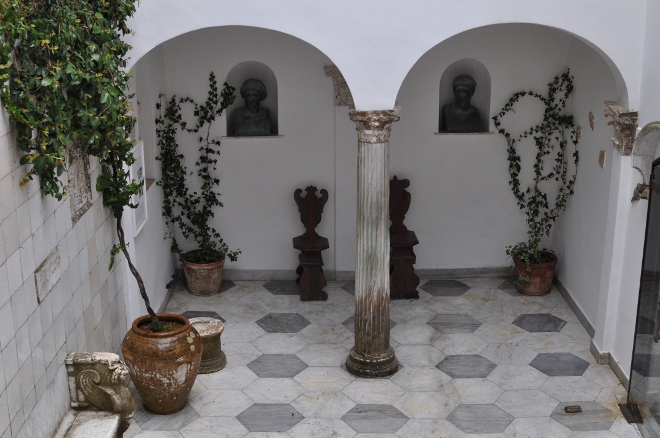
The Atrium
Actually the atrium is not the first place you visit when you entering the Villa, you can reach it through the kitchen but I’m showing you as the first because I think is symbolic of the Villa’s style. As you can see it’s a small courtyard in which Axel Munthe put Roman tomb inscriptions and various types of antique fragments discovered among the remains of Roman villas on Capri.
This place where old and new meet and blend each others, may be interpreted as a symbol of Axel Munthe’s philosophy. It’ s a place of peace and meditation where dead things like roman fragments perfectly dialogue with plants and nature, symbolising the connection between life, art and death.
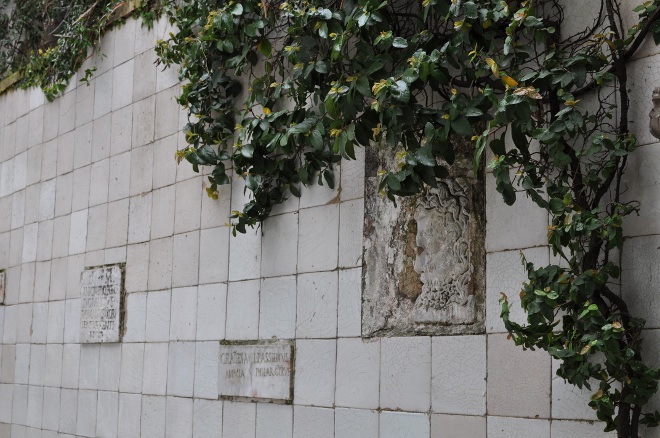
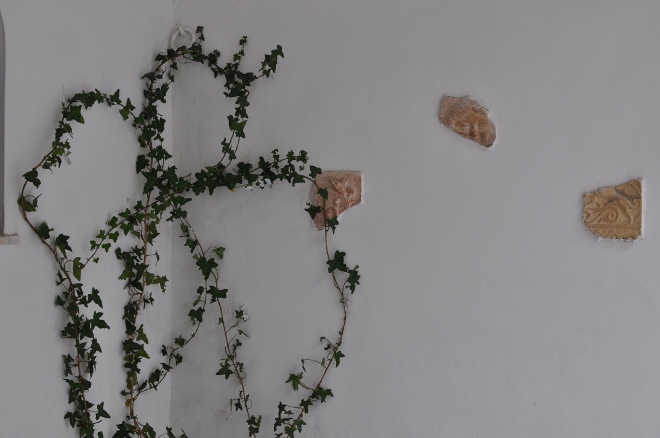

In the middle of the atrium there is a roman well-mouth (puteal), cut from a single block of white marble.
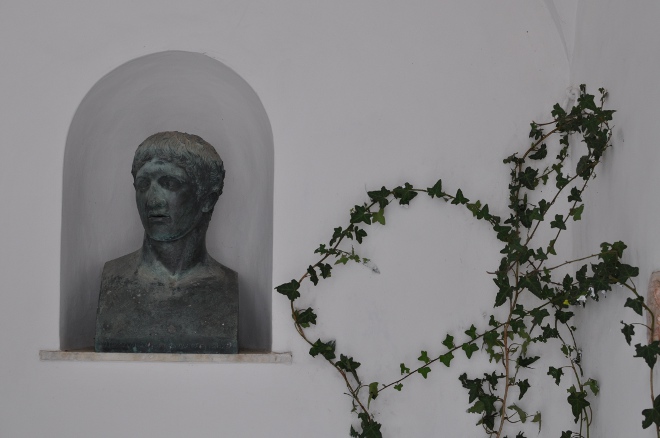
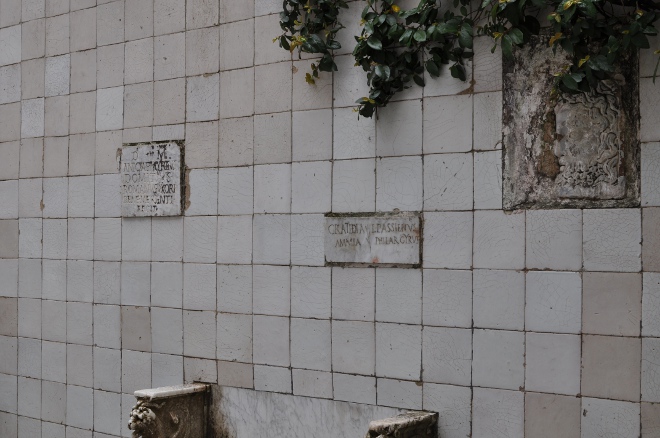
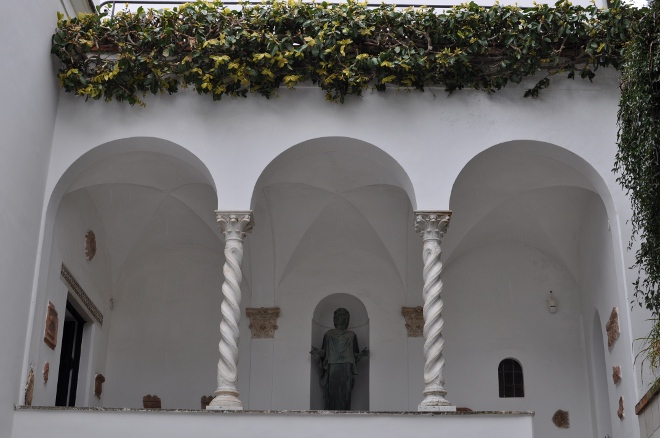
The Loggia: here we can see a bronze copy of a female figure belonging to the mysterious group of sculptures called “The Sibyls from Herculaneum”.
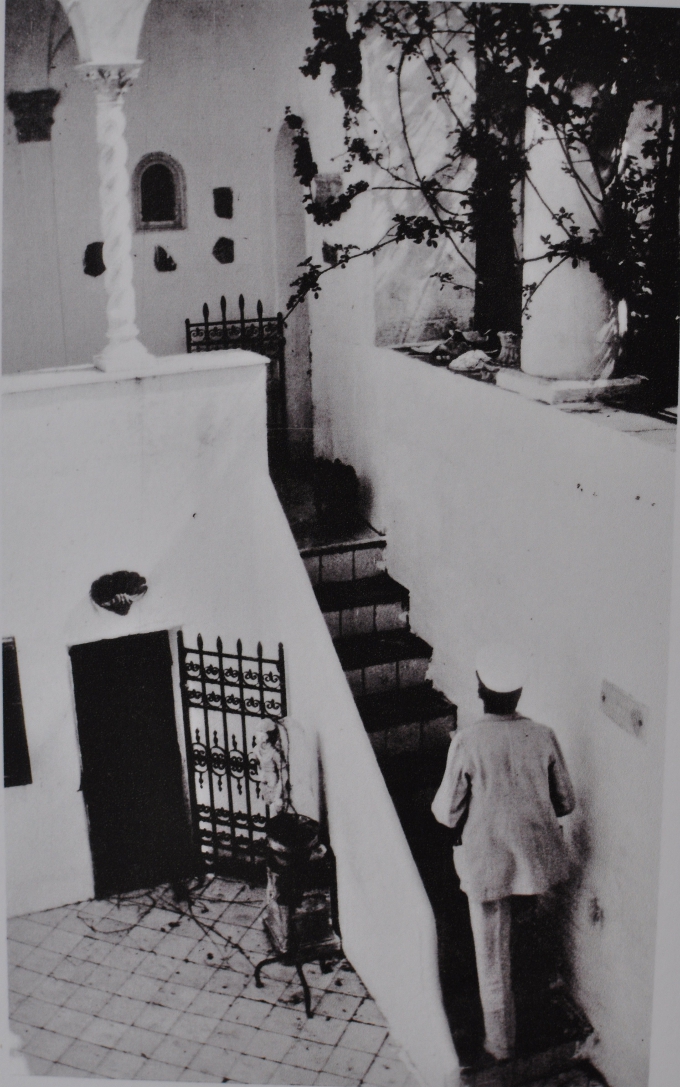
an old picture of the Atrium and the Loggia
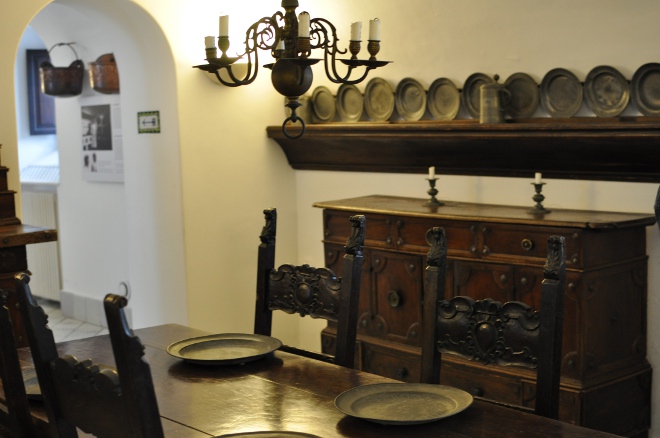
The Dining Room
The Dining Room is the first room you visit when you enter in the Villa. It displays the original objects in their original arrangement.
“The dining-room surprises the visitor with its replica of a Roman mosaic placed in front of the door. It shows a skeleton holding a carafe of wine in one hand and a jug of water in the other hand. The message could either be a call to moderation, or on the contrary, a recommendation to enjoy life to the full while there is still time. The decorative details vary both in age and artistic value. The heavyu Renaissance sideboard is from Bologna. The large chest with inlaid frontal dates from the 15th century.” Levente Erdeös
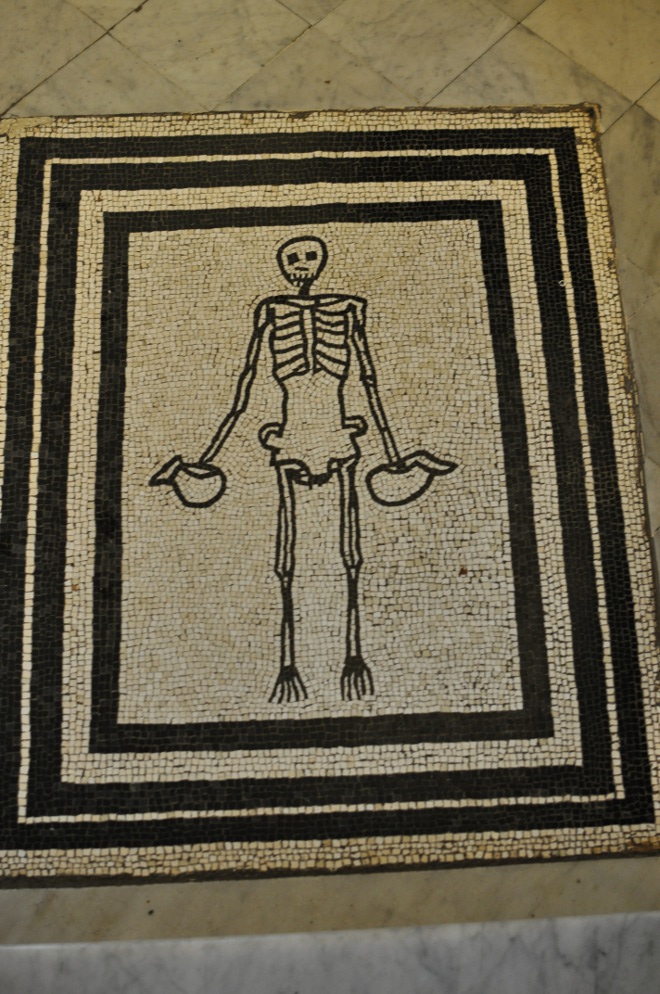
The original of this black and white mosaic floor is Pompeian and was covered by ashes and pomice when the Vesuvius exploded in 79 A.D.
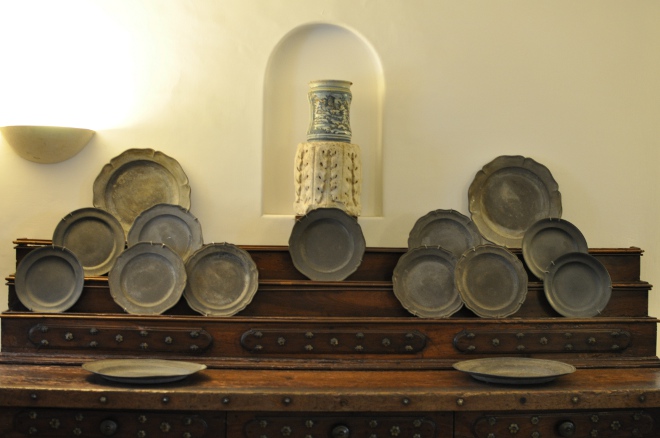
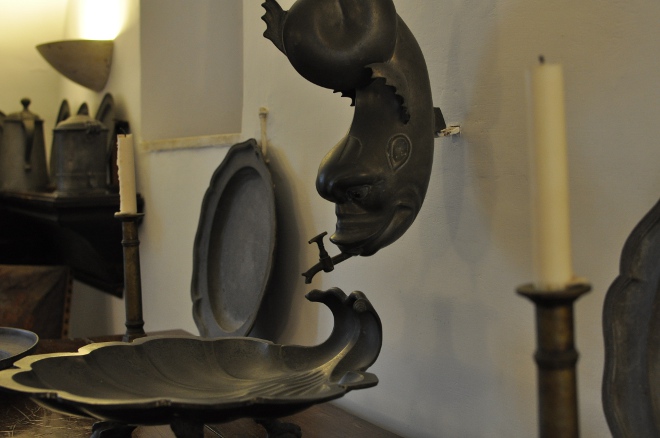

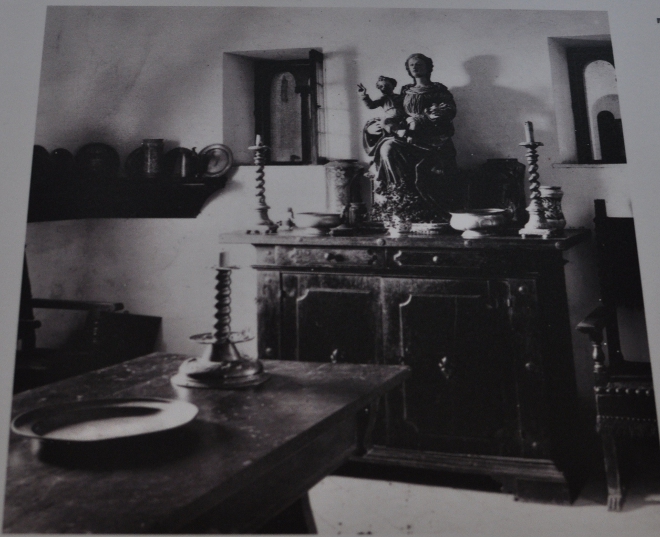
An old picture of how the dining room looked like.
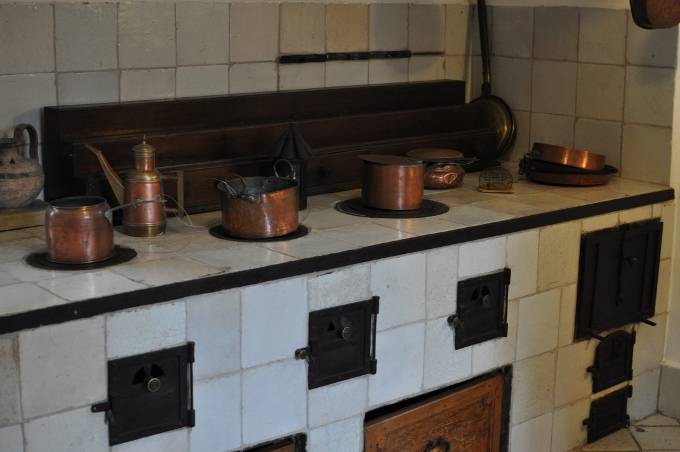
The Kitchen
The stove with three hotplates in iron, two boxes in wood and six doors in iron.
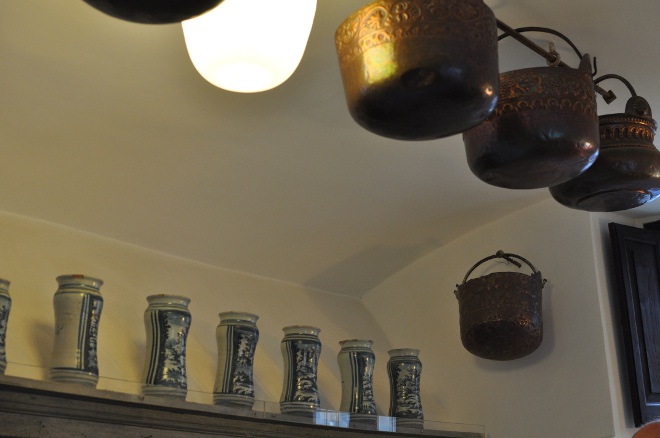
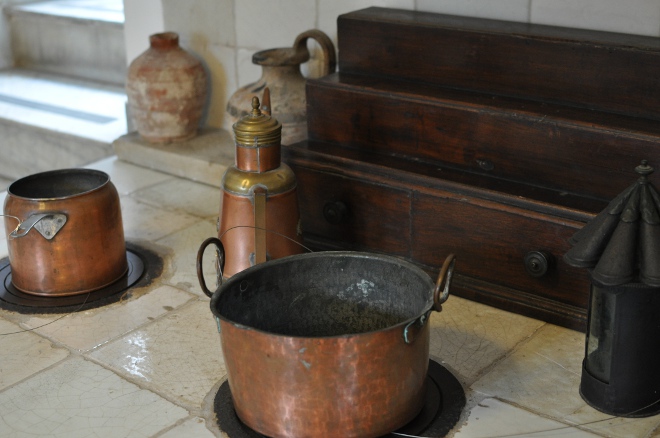
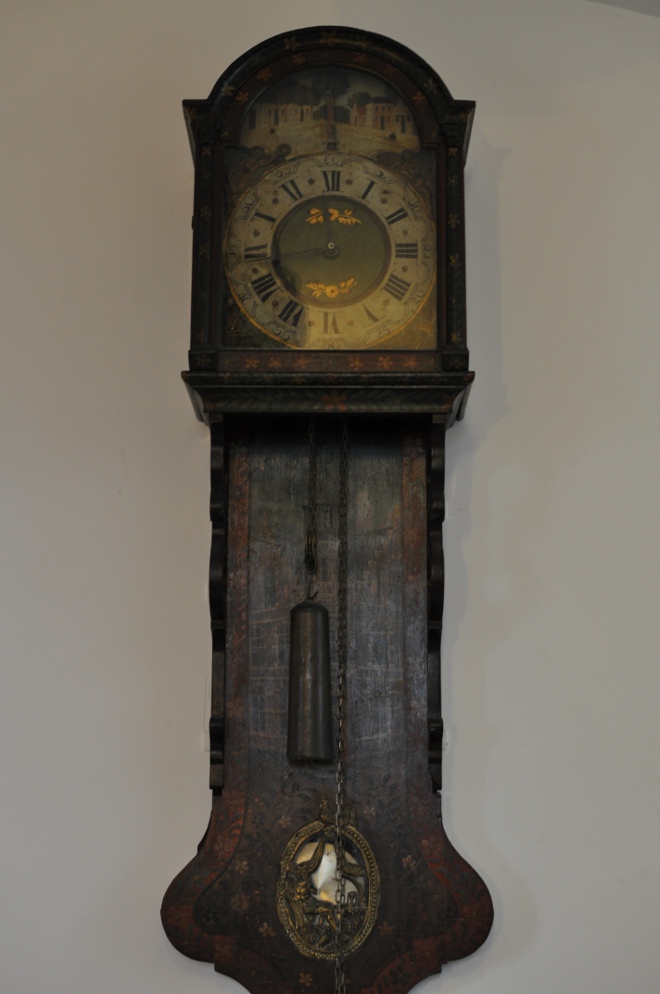
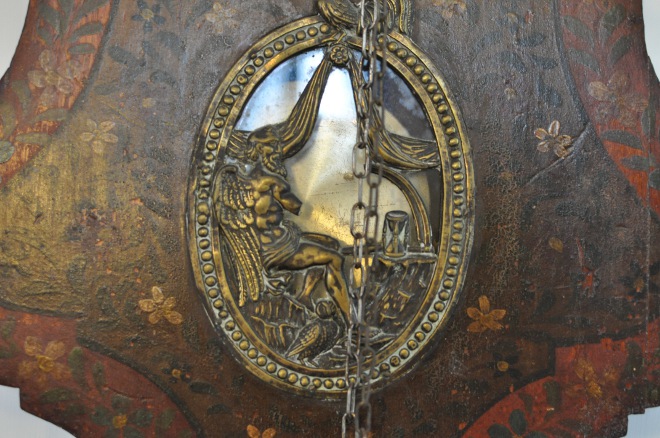
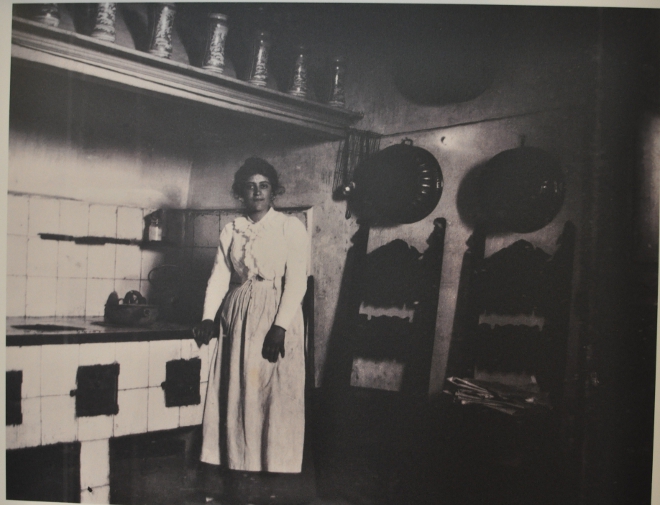
Old pictures of the kitchen. The girl (whose name I can’t remember) was Munthe’s housemaid. He knew her in Capri, tought her to read and write and she stayed at the Villa taking care of the kitchen together with her mother.
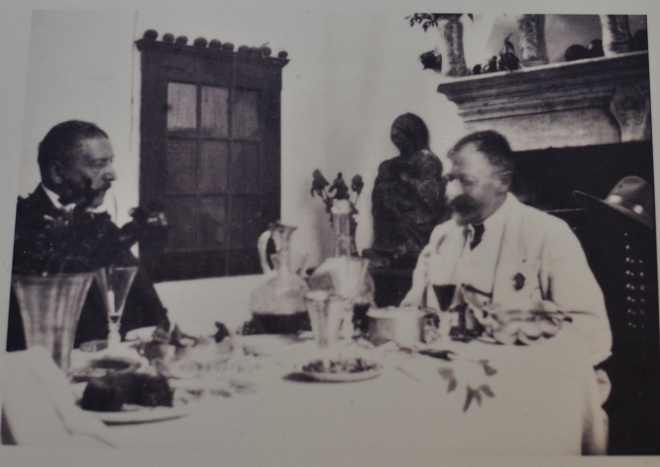
Munthe and a guest in the dining room
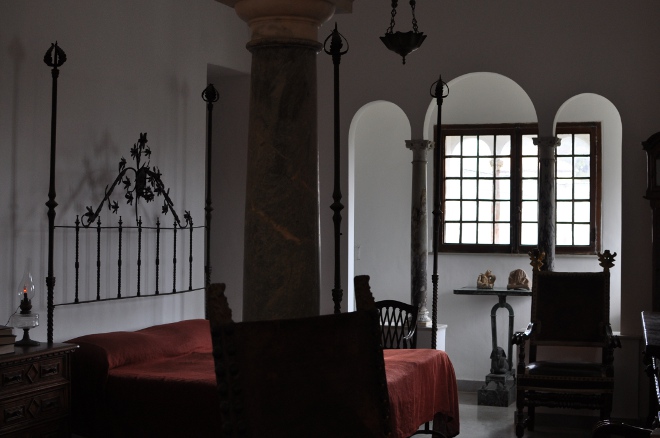
The Bedroom
Probably the most beautiful of the rooms for its unique way of combine ancient and modern things. The room is divided into two parts by an arcade and a middle column, a recurrent architectural motif of the Villa. The 15-th century wrought-iron bed is Sicilian and was presumably a campbed. On the tables and on walls are roman remains or relieves. Furnishing is ancient too but coming from 15th and 18th centuries. The twilight pervading the room helps meditation and reflection.

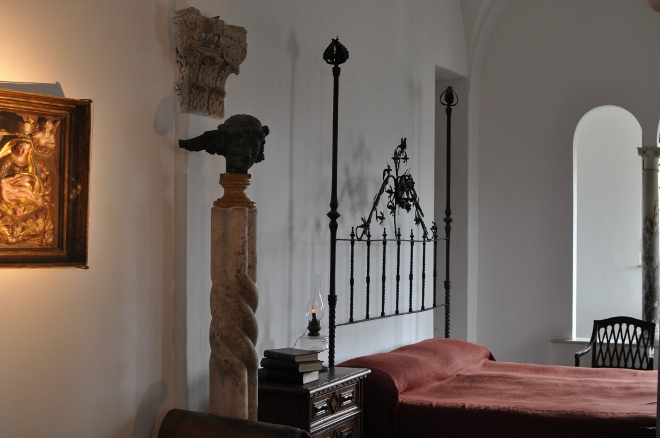

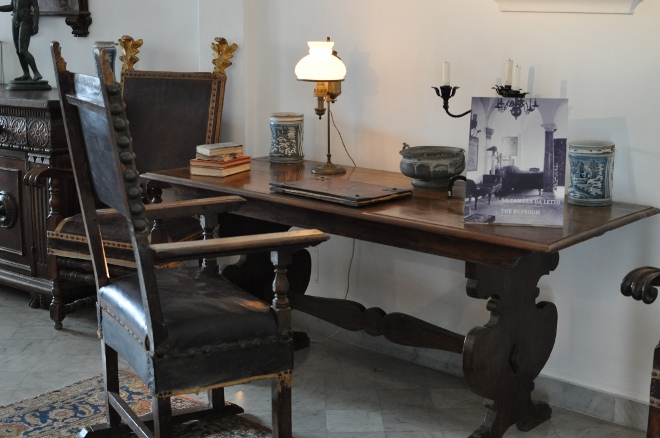
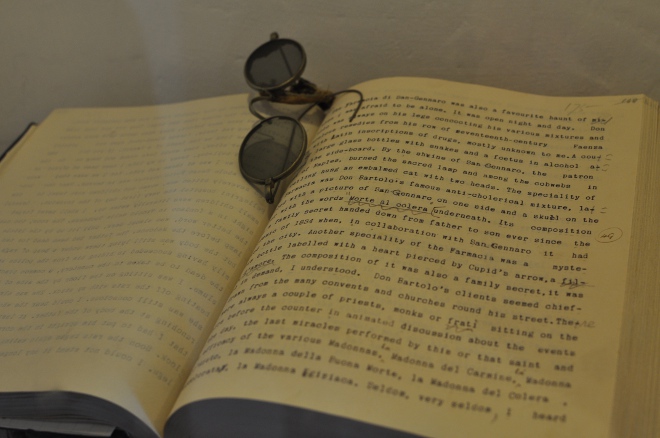
The French Salon
The most empty of the rooms of the villa, it houses the first copy of the book “The Story of San Michele” with Munthe’s autographic corrections and his reading glasses. But this room is for me the most important of the house because it shows on the wall a precious finds: Casati’s motto.
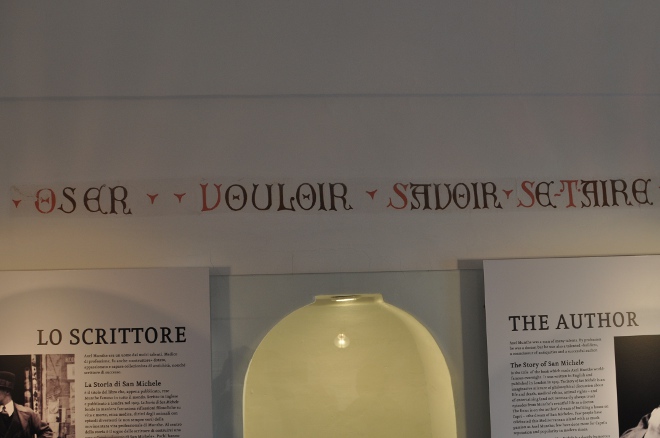
This is ONLY surviving thing that Marchesa Luisa Casati left to us. During her stay in the Villa she changed the furnishing and decoration of the house according to his eccentric tastes and she wrote on the walls these french words; “Oser. Vouloir. Savoir. Se-taire” that means “To dare. To want. To know. To be quite itself”. Munthe decided to keep this motto, unlike other changes Casati did in the Villa. The most famous book about Marchesa’s story, written by Scot D. Ryersson and Michael Orlando Yaccarino “Potraits of a Muse” took inspiration from here.
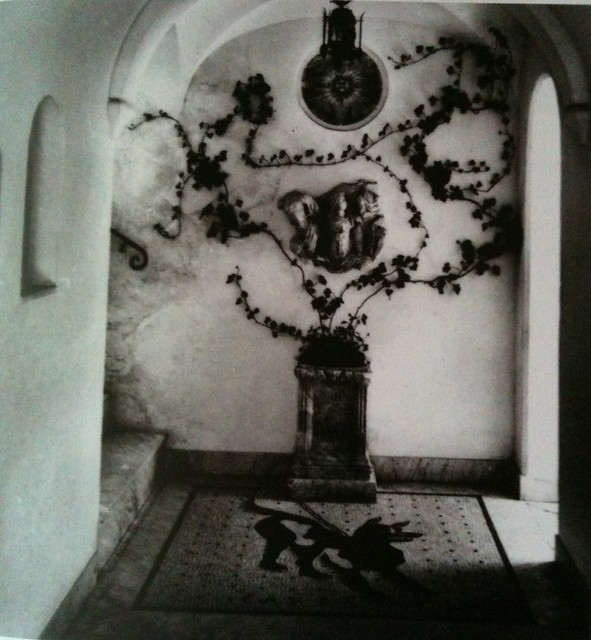
Cave Canem floor mosaic by a photographer unknown ca. 1920
 Luisa Casati’s bedroom at Villa San Michele, 1920’s
Luisa Casati’s bedroom at Villa San Michele, 1920’s
Luisa Casati at Villa San Michele.
Luisa Casati arrived in Capri in 1920 and chose to stay at Villa San Michele, with or without Munthe’s permission. Her arrive was troubled because Munthe was not so glad to having the Marchesa as tenant knowing her eccentricities but at the end she made it. Luisa did not wait to give her personal touch to the Villa and decided to change the original decoration: “Ivory walls and windows were obscured behind golden curtains and heavy draperies of black velvet. Black carpets and animal skins hid the mosaic floors, while Munthe’s collection of antiques was shut away to allow space for the Marchesa’s ebony forniture. In a room now reserved for Casati’s sorcery pharaphernalia, a black sheepskinhad been nailed to one wall and the others were adorned with quotations and proverbs handwritten in french and with black paint”. She was in her black period wearing swathing gowns and dyeing her hair first in green and then black, rumors said she used to celebrate black masses in the Villa.
Axel Munthe did not frequently socialize with Casati but others on the island found her a curiosity and accepted invitations to San Michele like Sir Compton Mackenzie, who often invited her to his Villa Casa Solitaria, the old friend, furistic painter Fortunato Depero. Diaghilev and Gabriele D’Annunzio come to visit her. In Capri Luisa also made new friendships like the one with painter Romaine Brooks, who made a portrait of her, and with Capri’s most notorious exile baron Jacques d’Adelswärd-Fersen who lived in Villa Lysis. The nobleman shared the Villa with his companion, the 15 years old newspaper boy from Rome, Nino Cesarini. More than one source confirms Casati as frequent guest to Fersen’s Chinese room, the opium room.
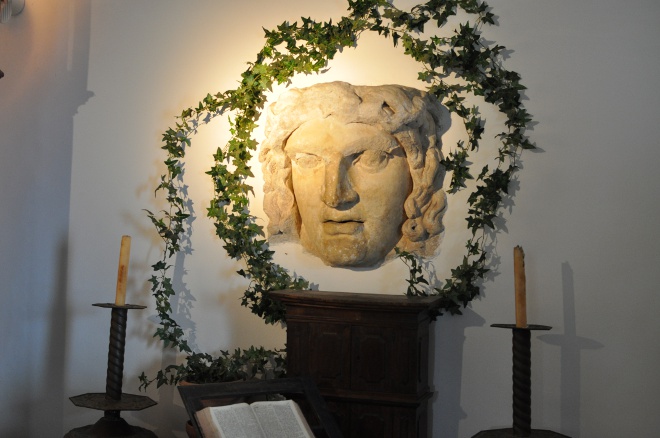
The Studio
It was the place where Munthe preferred to write. You can see a Medusa’s head in white marble hanging above the writing desk in the studio which Munthe reputedly found on the seabed off Palazzo a Mare even if possibly the mask comes from the Temple of Venus and Roma, built by Hadrian in 307 AD.
The Medusa’s head is the only object, along with the Egyptian sphinx, belonging to San Michele that remained unthouched during Luisa Casati stay because they appealed to her tastes.
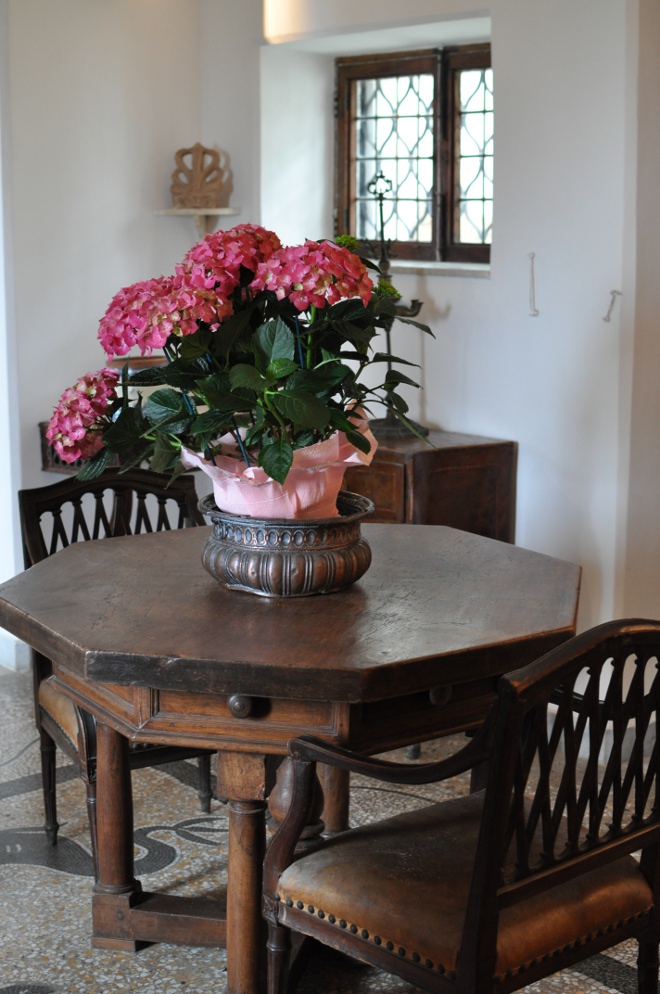
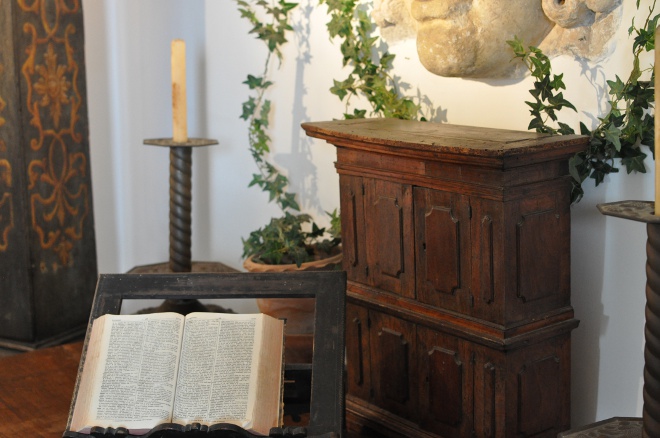
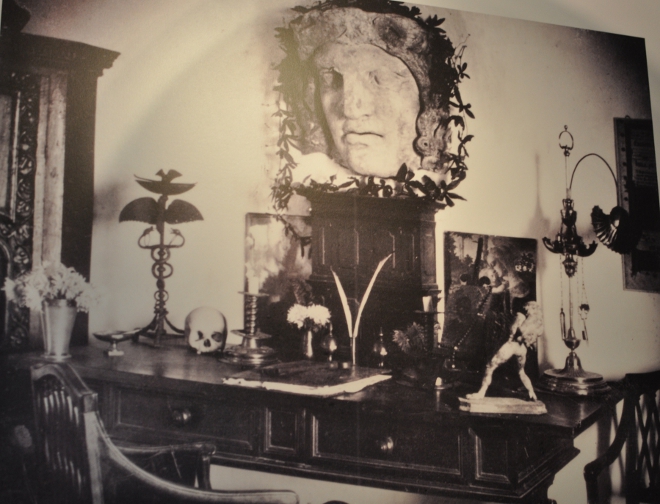
How the Studio looked like during Munthe stay. You can see the skull on the table, Munthe was obsessed with vanitas symbols.
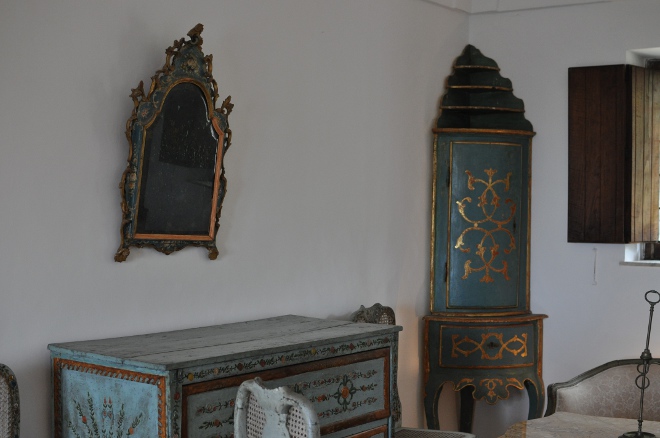
The Venetian Salon
It’s so called because most part of the rococo furnitures comes from Venice, like the 18th century mirror made in golden wood. The chandelier, instead, is an eccelent work of Sicilian handicraft, made of wrought iron.
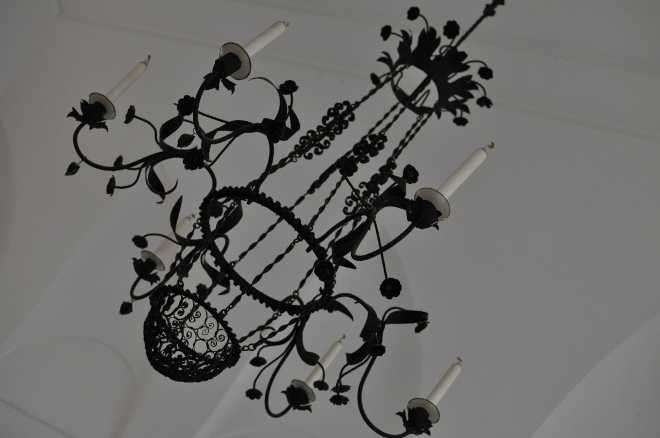
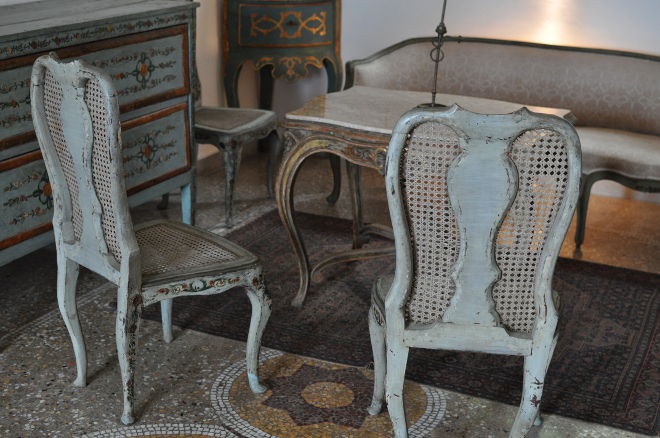
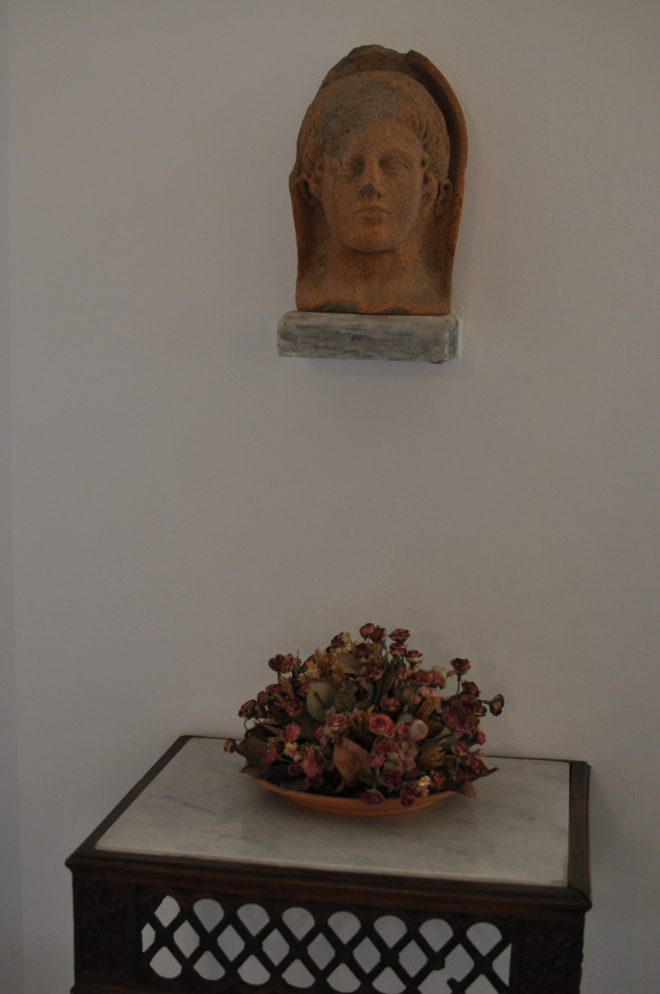


The Gallery
Leaving the Villa one passes under an open gallery which then becomes a pergola and later opens into a series of terraces with splendid panoramic views. The design of the garden still follows Munthe’s intentions. Everywhere pots, amphoras and various “objets d’art” are to be seen like the cosmatesque table. Munthe found it in a small town near Palermo where it was used as a laundry table.
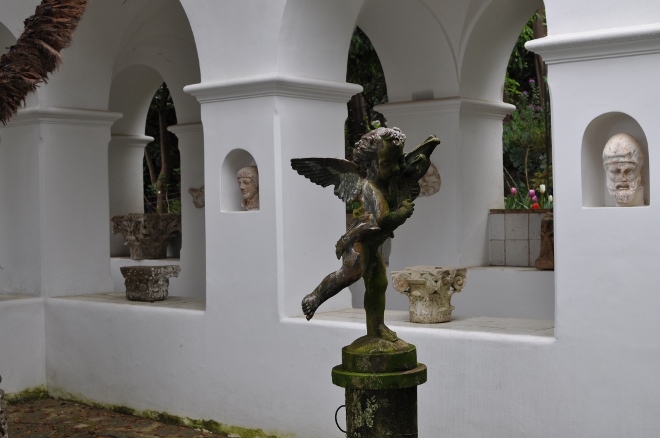
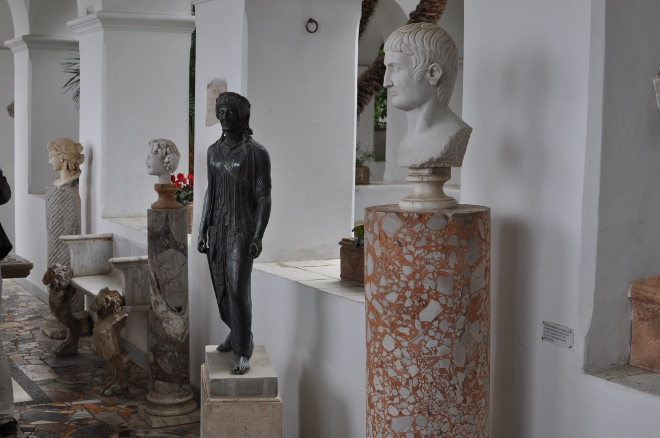
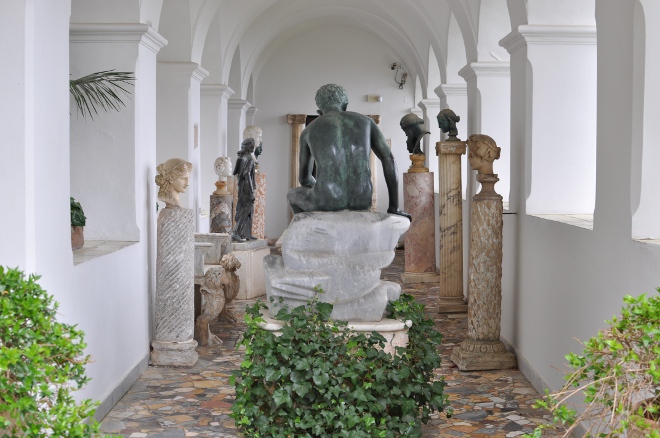
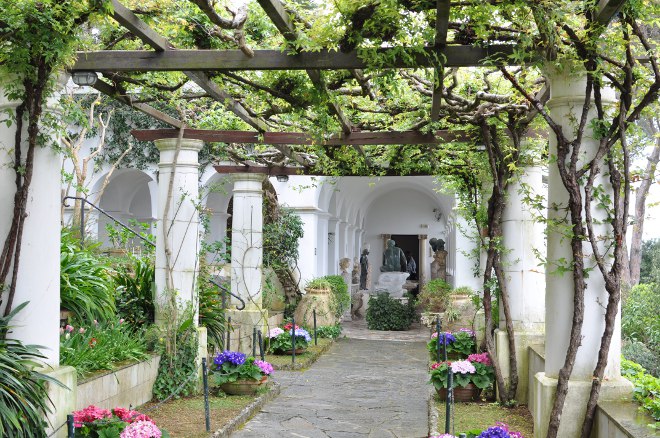
The Pergola
Many different flowers come into bloom and the garden remains fresh and green all year round.
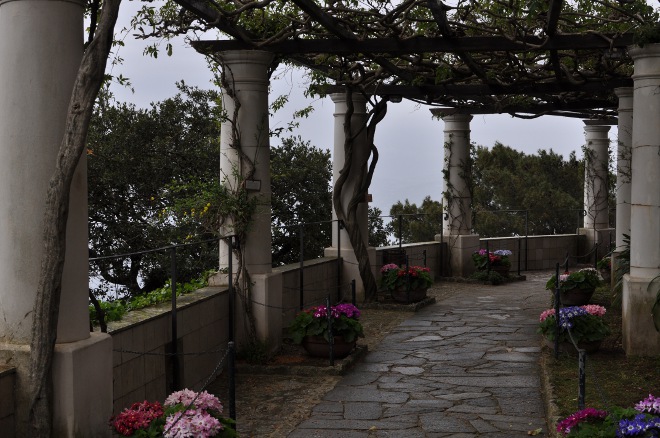
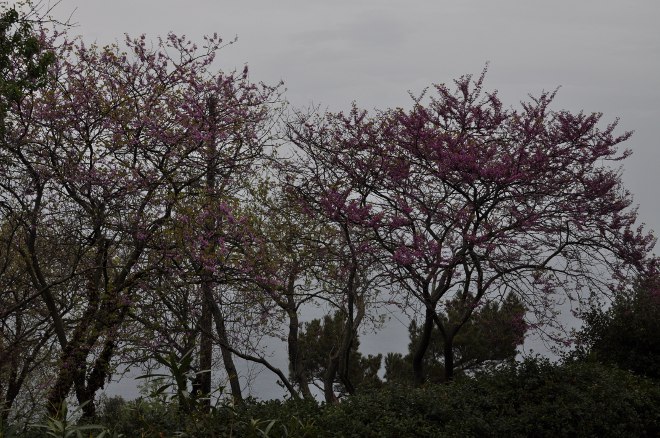

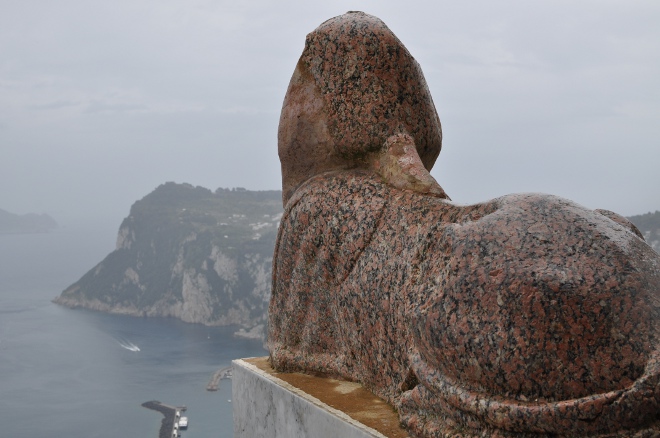
The Sphinx
Actually there are two sphinxes in the Villa. The sphinx has become in some way the symbol of Villa San Michele and object of a lot of legends. The bigger one (above), a granite statue, half lion, half woman, is the Egyptian Sphinx and it’s dated in XIII century b.C. Even if Axel Munthe wrote in the book “The story of Villa San Michele” that he found it out in the country during a morning, after a premonitory dream, we’ll probably never know how he found his sphinx. It probably doesn’t even come from the island, but it does come from Egypt and it has adorned a villa in the Roman Empire. Now the fantasy creature is on the last outpost of Axel Munthe’s villa looking towards the rising sun in the east.
Luisa Casati was particularly fond of the egyptian sphinx as it was reputed to grant the wishes of those who touched its flank with their left hand.

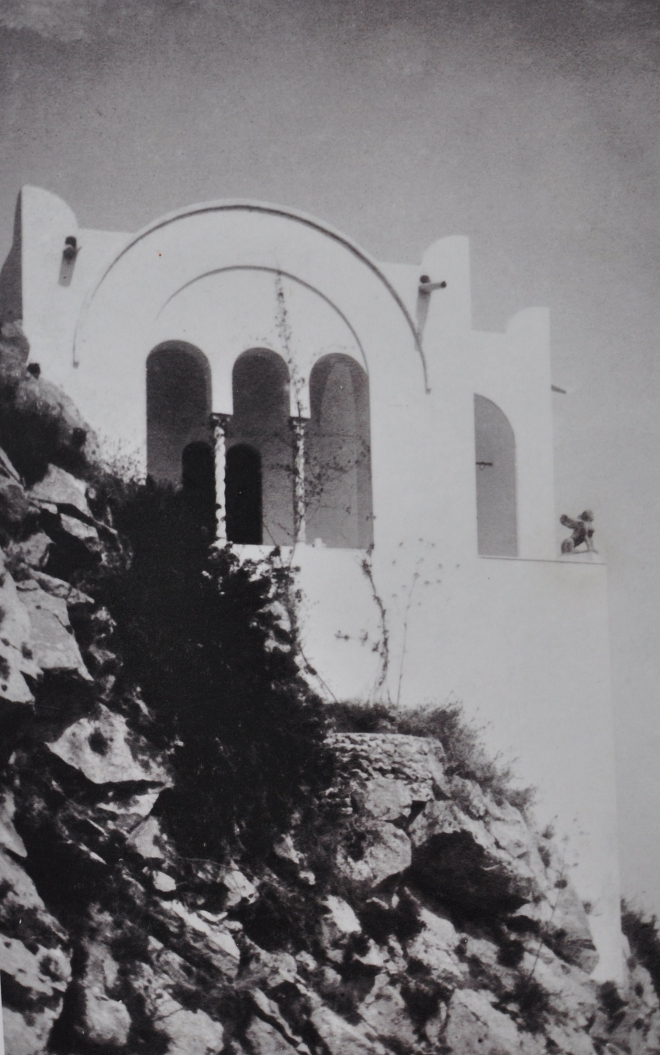
View of the sphinx from the outside in an old picture
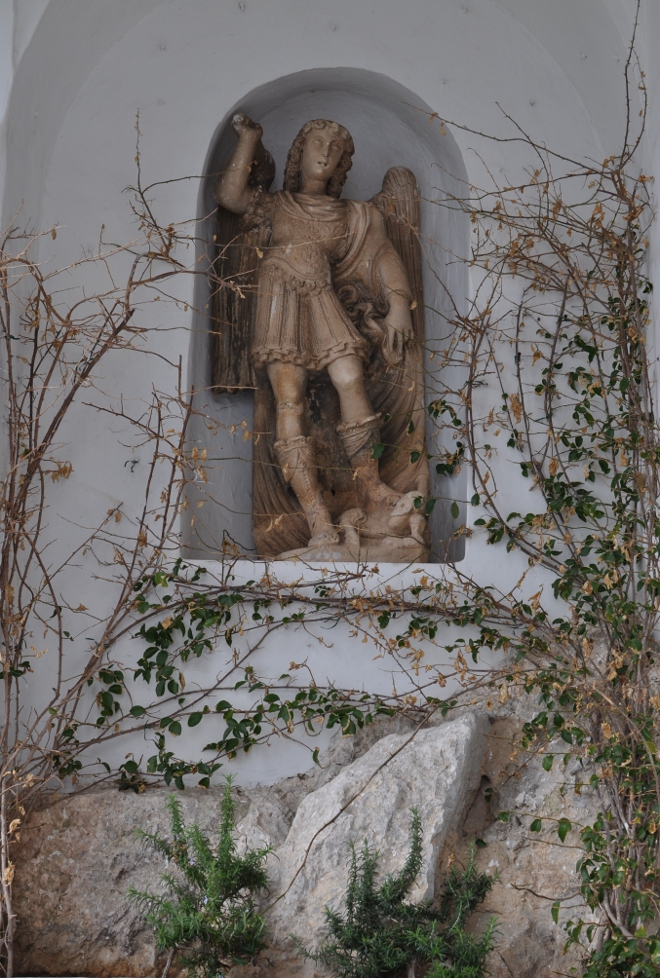
the end of the chapel archades
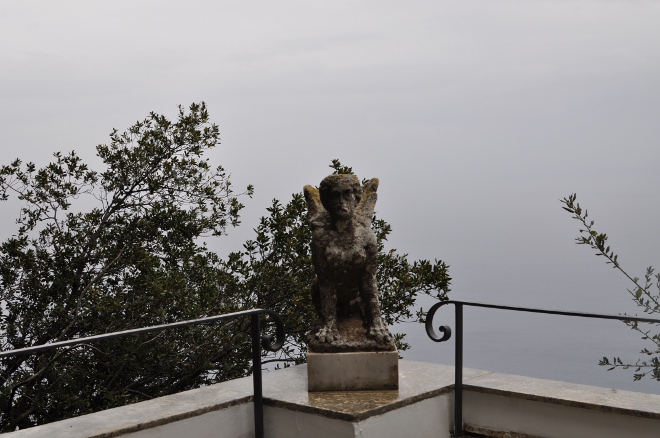
This is the Etruscan sphinx, smaller than the other and once setted where today is the Egyptian one. Now is on the chapel terrace.
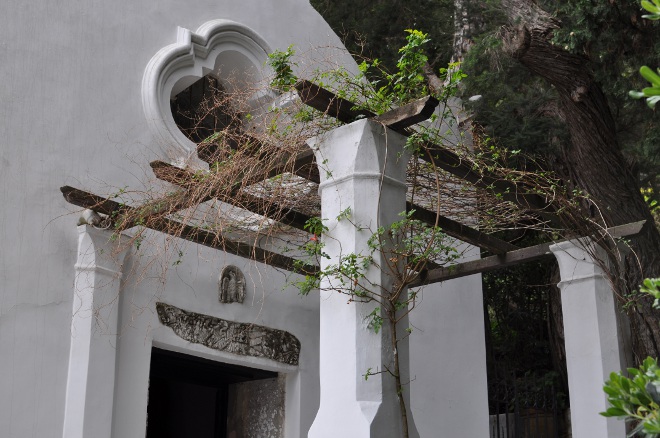
The Chapel (entrance)
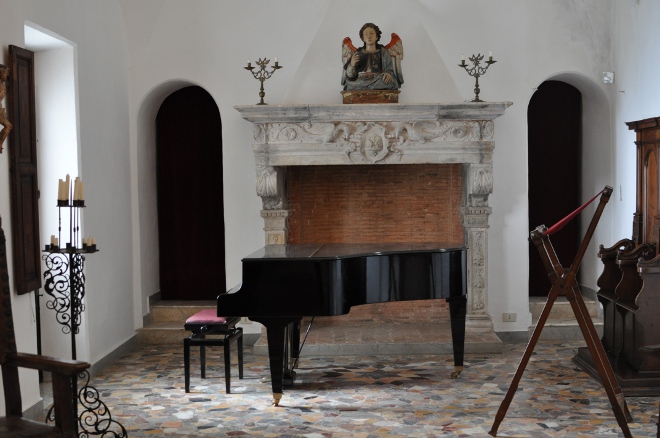
Inside the chapel today.
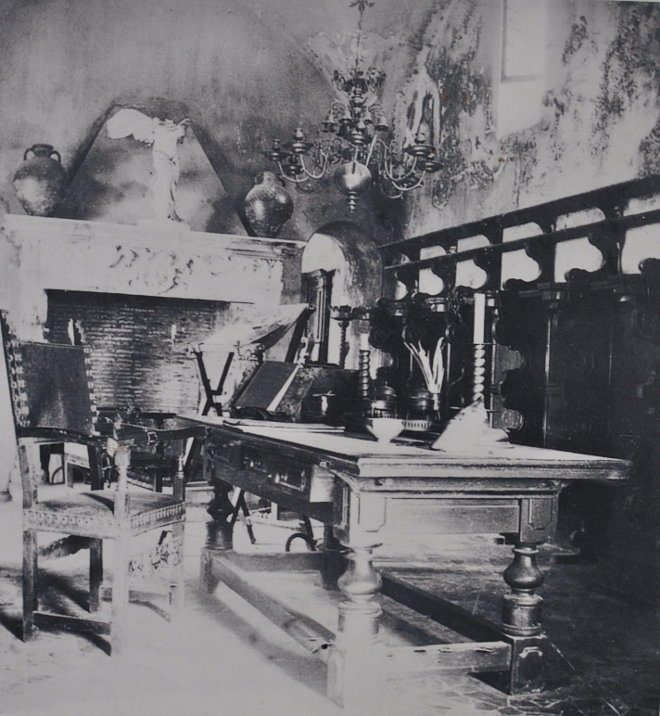
Inside the chapel about in 1901 a.C., photographed by Prince Max of Baden and once used as a library.
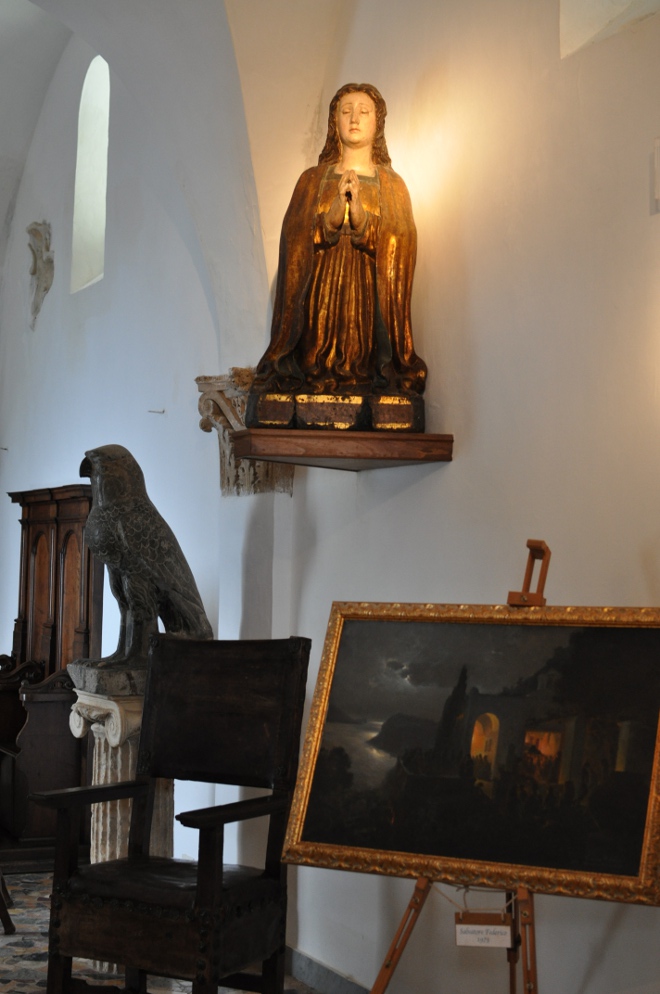
Another masterpiece from Egypt, the so-called Horus falcon.
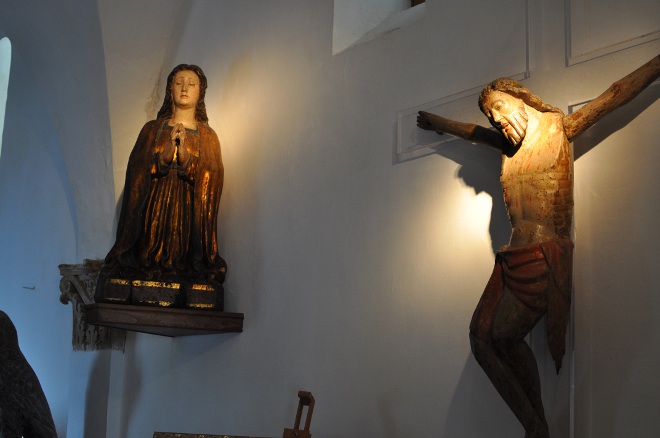
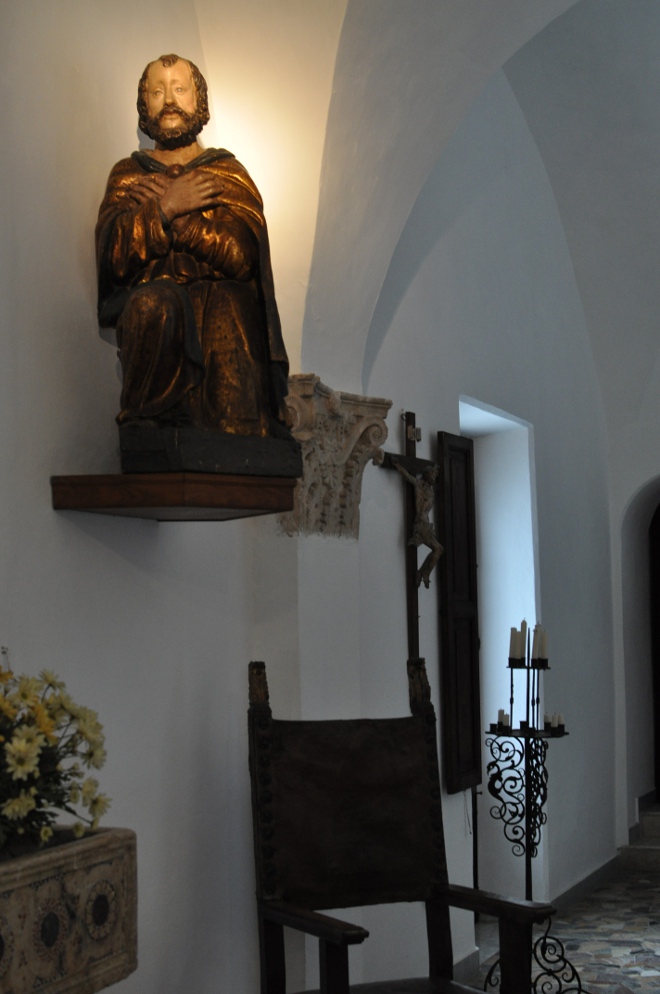
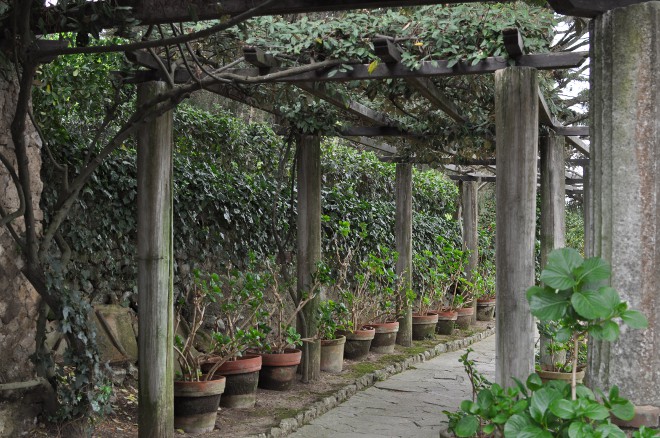

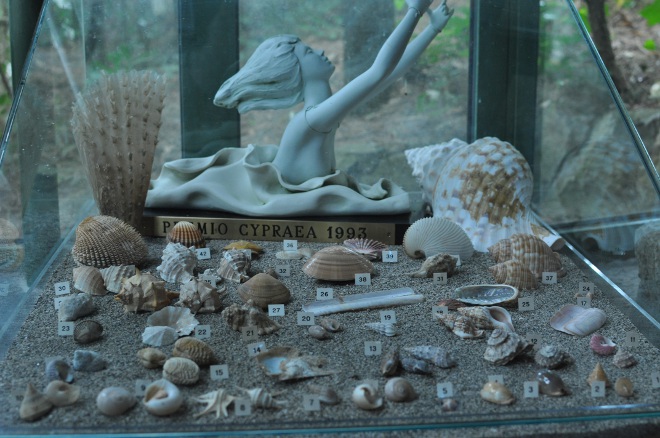
The Olivetum
Partly concealed by olive trees and completely in harmony with its surroundings is the garden pavilion known as the Olivetum. The garden pavilion was designed by architect and curator of Villa San Michele 1975-1995 Levente Erdeös who said: “Its function accords with Munthe’s great passion for nature. A permanent exhibition dedicated to Capri’s unique flora and fauna has been set up in the Olivetum.” Here is the shell collection.

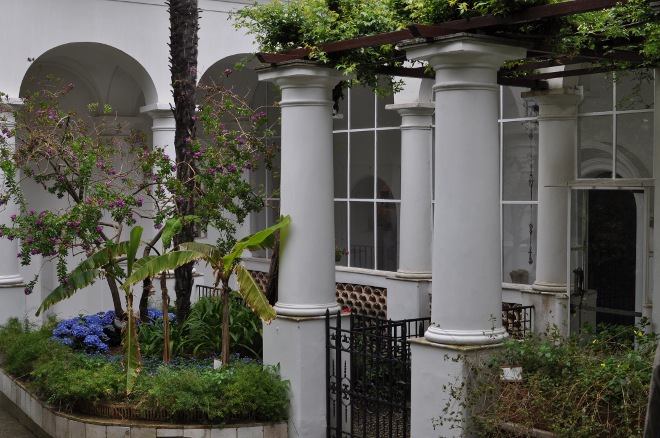
The exit.

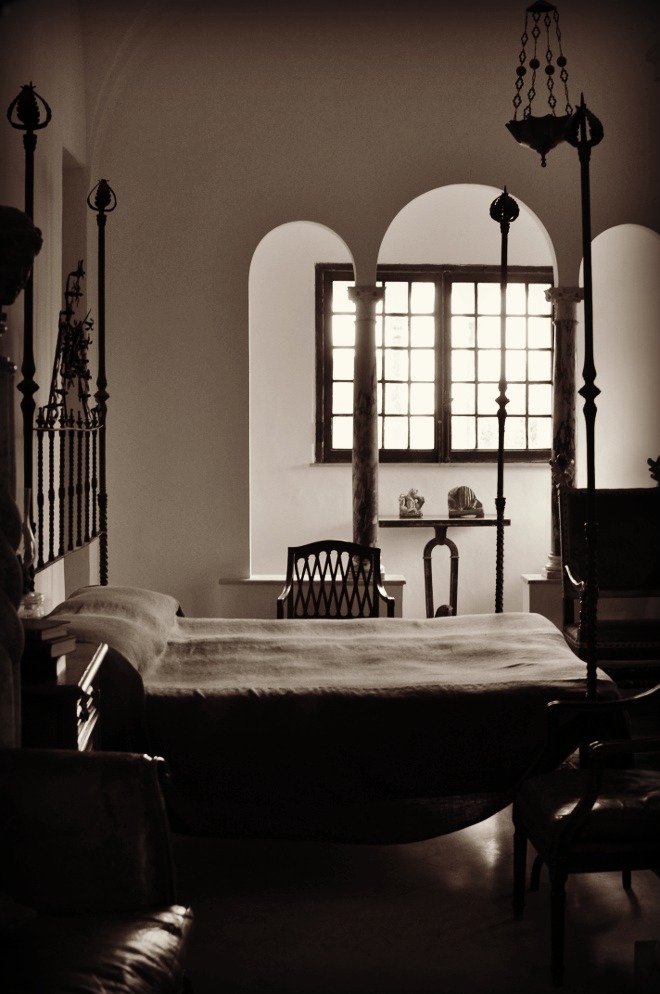
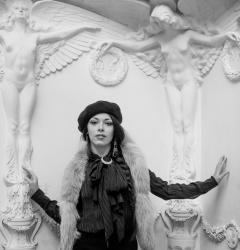


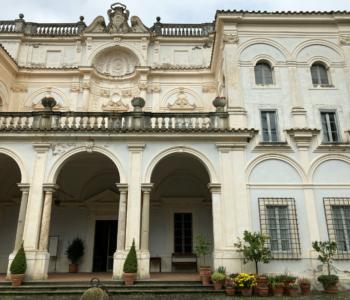
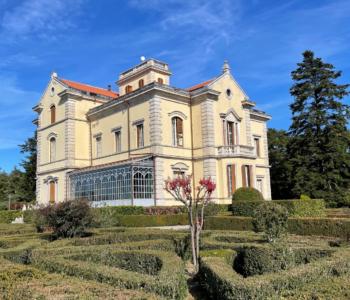

3 Commenti a “Villa San Michele, Capri”
A beautifully written description of an earthly paradise.
“Oser. Vouloir. Savoir. Se-taire”
I think this is best translated as: “To Dare. To Want. To Know. To be Quiet.”
Non per la pubblicazione – questa è solo una piccola correzione … molte grazie..
Pip
Concordo. Grazie per il commento!
Trackbacks per le News